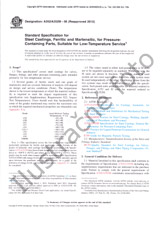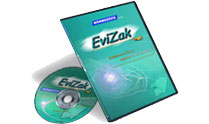Potrebujeme váš súhlas na využitie jednotlivých dát, aby sa vám okrem iného mohli ukazovať informácie týkajúce sa vašich záujmov. Súhlas udelíte kliknutím na tlačidlo „OK“.
ASTM D4535-21
Standard Test Methods for Measurement of Thermal Expansion of Rock Using Dilatometer
NORMA vydaná dňa 1.6.2021
Informácie o norme:
Označenie normy: ASTM D4535-21
Dátum vydania normy: 1.6.2021
Kód tovaru: NS-1028011
Počet strán: 7
Približná hmotnosť: 21 g (0.05 libier)
Krajina: Americká technická norma
Kategória: Technické normy ASTM
Kategórie - podobné normy:
Zemní práce. Hloubicí práce. Budování základů. Podzemní práce
Anotácia textu normy ASTM D4535-21 :
Keywords:
rock, thermal expansion/contraction, thermal strain, dilatometer,, ICS Number Code 93.020 (Earth works. Excavations. Foundation construction. Underground works)
Doplňujúce informácie
| Significance and Use | ||||||||||||||
|
5.1?Information concerning the thermal expansion characteristics of rocks is important in the design of any underground excavation where the surrounding rock may be heated. Thermal strain causes thermal stresses which ultimately affect excavation stability. Examples of applications where rock thermal strain is important include: nuclear waste repositories, underground power stations, compressed air energy storage facilities, and geothermal energy facilities. 5.2?The coefficient of thermal expansion, ?, of rock is known to vary as the temperature changes. These methods provide continuous thermal strain values as a function of temperature, and therefore provide information on how the coefficient of thermal expansion changes with temperature. 5.3?Rocks are also often anisotropic, thus displaying different thermal strains depending on the orientation of strain measurement. These methods allow for measuring strain in one direction only. If anisotropy is expected, specimens with different orientations shall be prepared and tested. Note 1:?The quality of the result produced by this standard is
dependent on the competence of the personnel performing it, and the
suitability of the equipment and facilities used. Agencies that
meet the criteria of Practice D3740 are generally considered capable of
competent and objective testing. Users of this standard are
cautioned that compliance with Practice D3740 does not in itself assure reliable
results. Reliable results depend on many factors; Practice
D3740 provides a means of
evaluating some of those factors.
|
||||||||||||||
| 1. Scope | ||||||||||||||
|
1.1?These test methods cover the laboratory measurement of the one-dimensional linear thermal expansion of rocks using a dilatometer. 1.2?The methods are applicable between temperatures of 25?C to 300?C. Both bench top and confined measurement techniques are presented. Method A is used for unconfined or bench top measurements and Method B is used for confined conditions. Rocks of varying moisture content can be tested. 1.3?For satisfactory results in conformance with these test methods, the principles governing the size, construction, and use of the apparatus described in these test methods shall be followed. If the results are to be reported as having been obtained by either test method, then the pertinent requirements prescribed by that test method shall be met. 1.4?These test methods do not establish details of construction and procedures to cover all test situations that might offer difficulties to a person without technical knowledge concerning the theory of heat flow, temperature measurement, and general testing practices. Standardization of these test methods does not reduce the need for such technical knowledge. 1.5?UnitsThe values stated in SI units are to be regarded as standard. The values given in parentheses after SI units are provided for information only and are not considered standard. Reporting of test results in units other than SI shall not be regarded as nonconformance with this test method. 1.6?All observed and calculated values shall conform to the guidelines for significant digits and rounding established in Practice D6026. 1.6.1?The procedures used to specify how data are collected/recorded or calculated, in this standard are regarded as the industry standard. In addition, they are representative of the significant digits that generally should be retained. The procedures used do not consider material variation, purpose for obtaining the data, special purpose studies, or any considerations for the users objectives; and it is common practice to increase or reduce significant digits of reported data to be commensurate with these considerations. It is beyond the scope of this standard to consider significant digits used in analytical methods for engineering design. 1.7?This standard does not purport to address all of the safety concerns, if any, associated with its use. It is the responsibility of the user of this standard to establish appropriate safety, health, and environmental practices and determine the applicability of regulatory limitations prior to use. 1.8?This international standard was developed in accordance with internationally recognized principles on standardization established in the Decision on Principles for the Development of International Standards, Guides and Recommendations issued by the World Trade Organization Technical Barriers to Trade (TBT) Committee. |
||||||||||||||
| 2. Referenced Documents | ||||||||||||||
|
Odporúčame:
EviZak - všetky zákony vrátane ich evidencie na jednom mieste
Poskytovanie aktuálnych informácií o legislatívnych predpisoch vyhlásených v Zbierke zákonov od roku 1945.
Aktualizácia 2x v mesiaci !
Chcete vedieť viac informácii ? Pozrite sa na túto stránku.




 Cookies
Cookies
